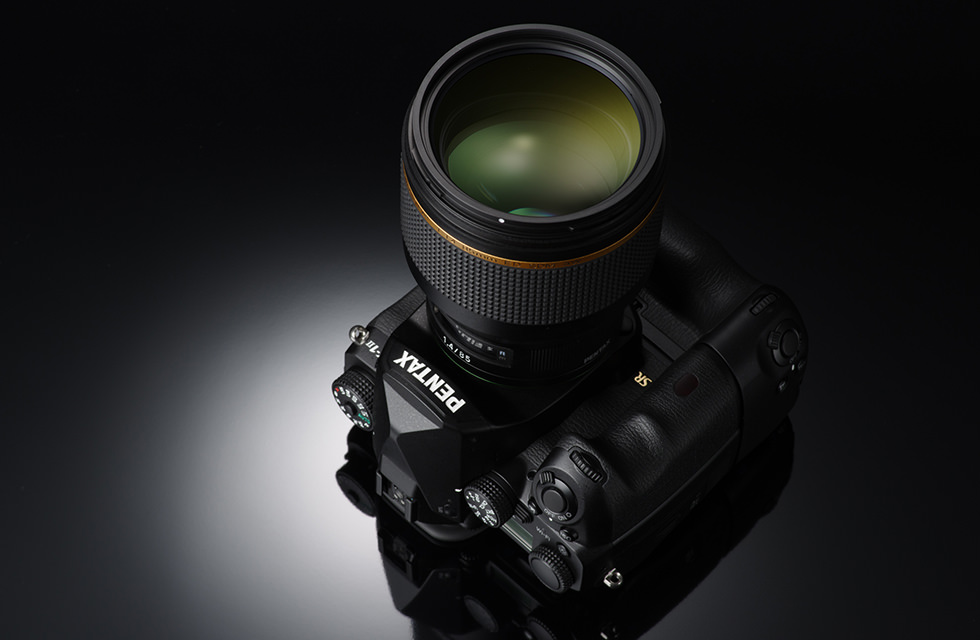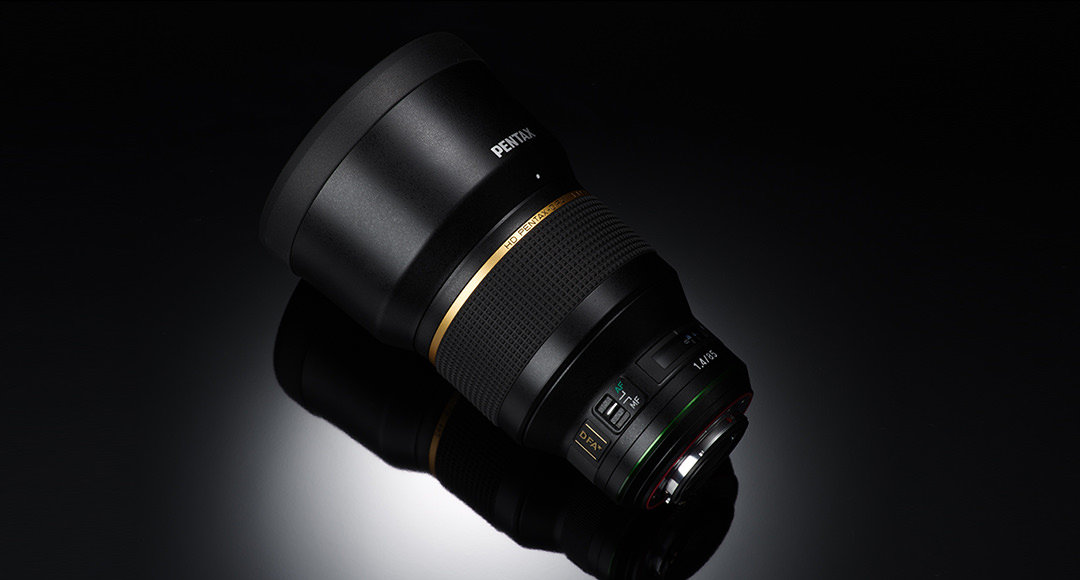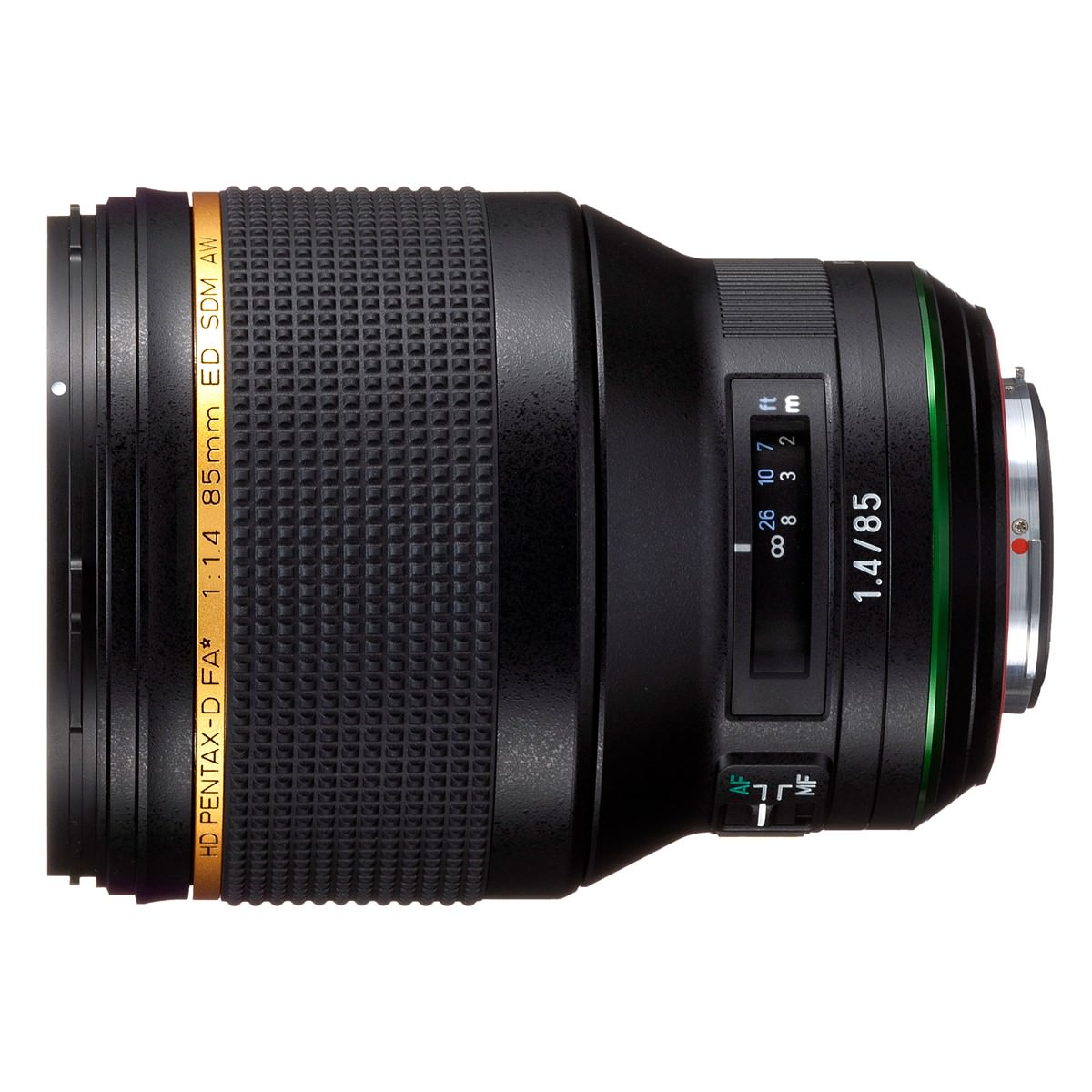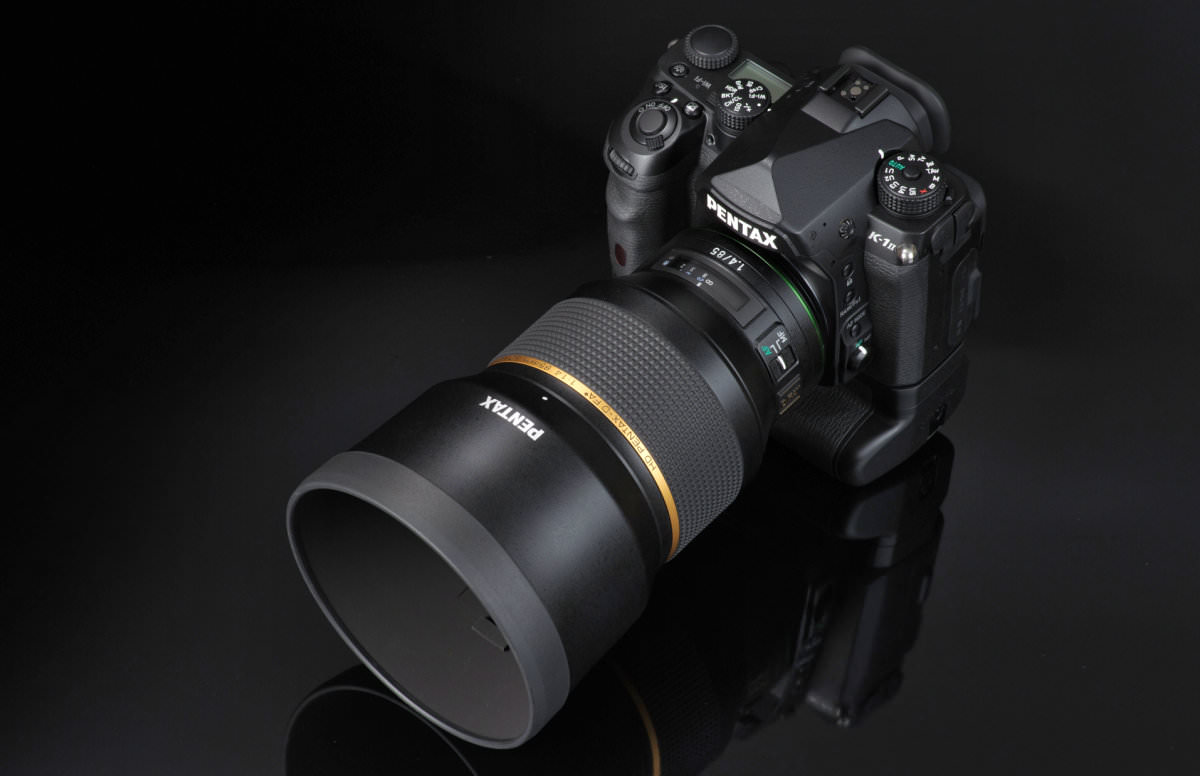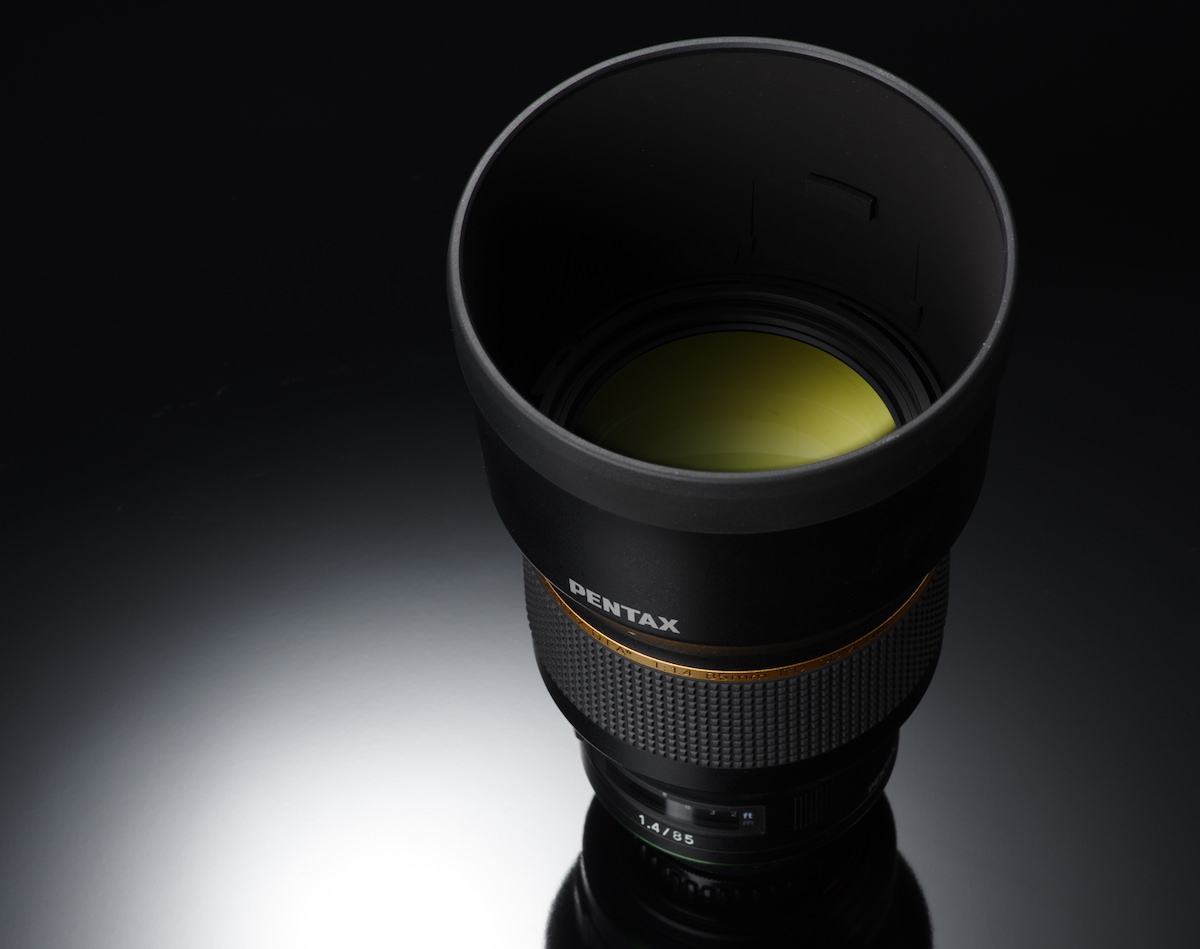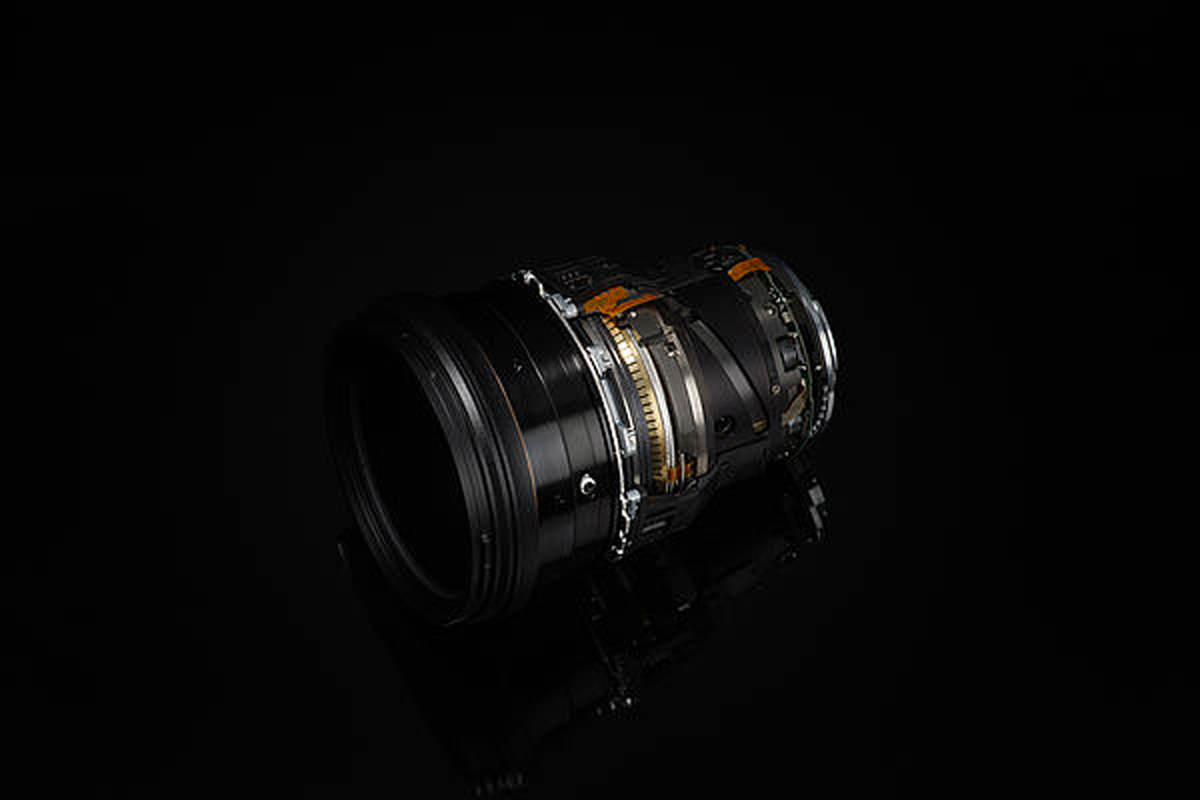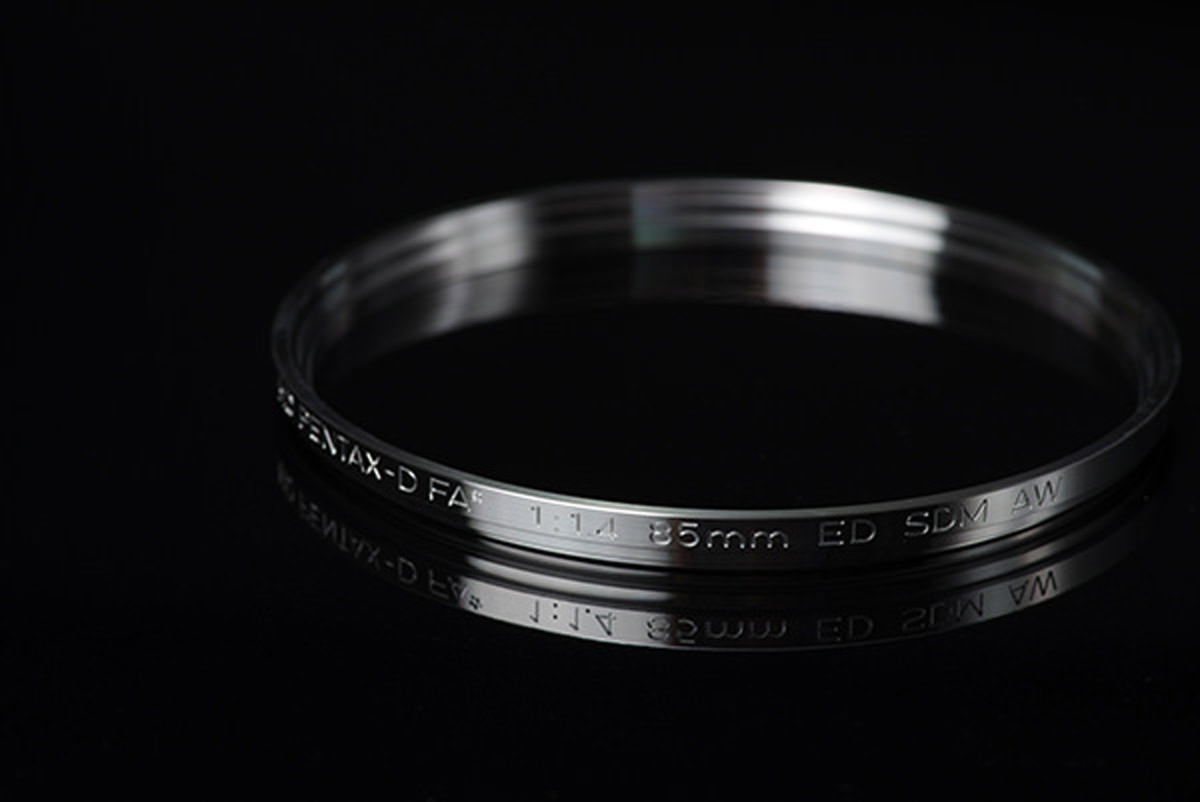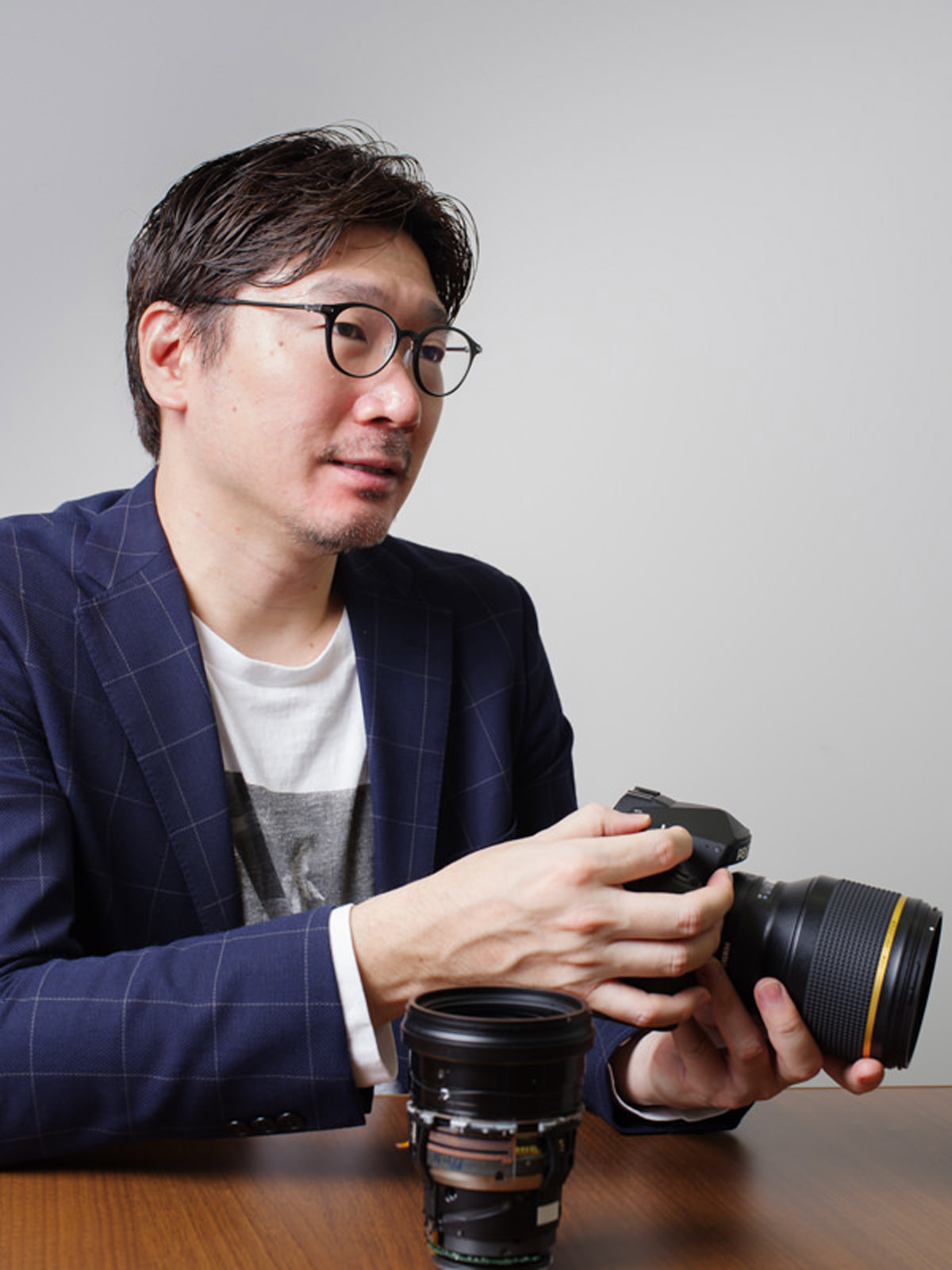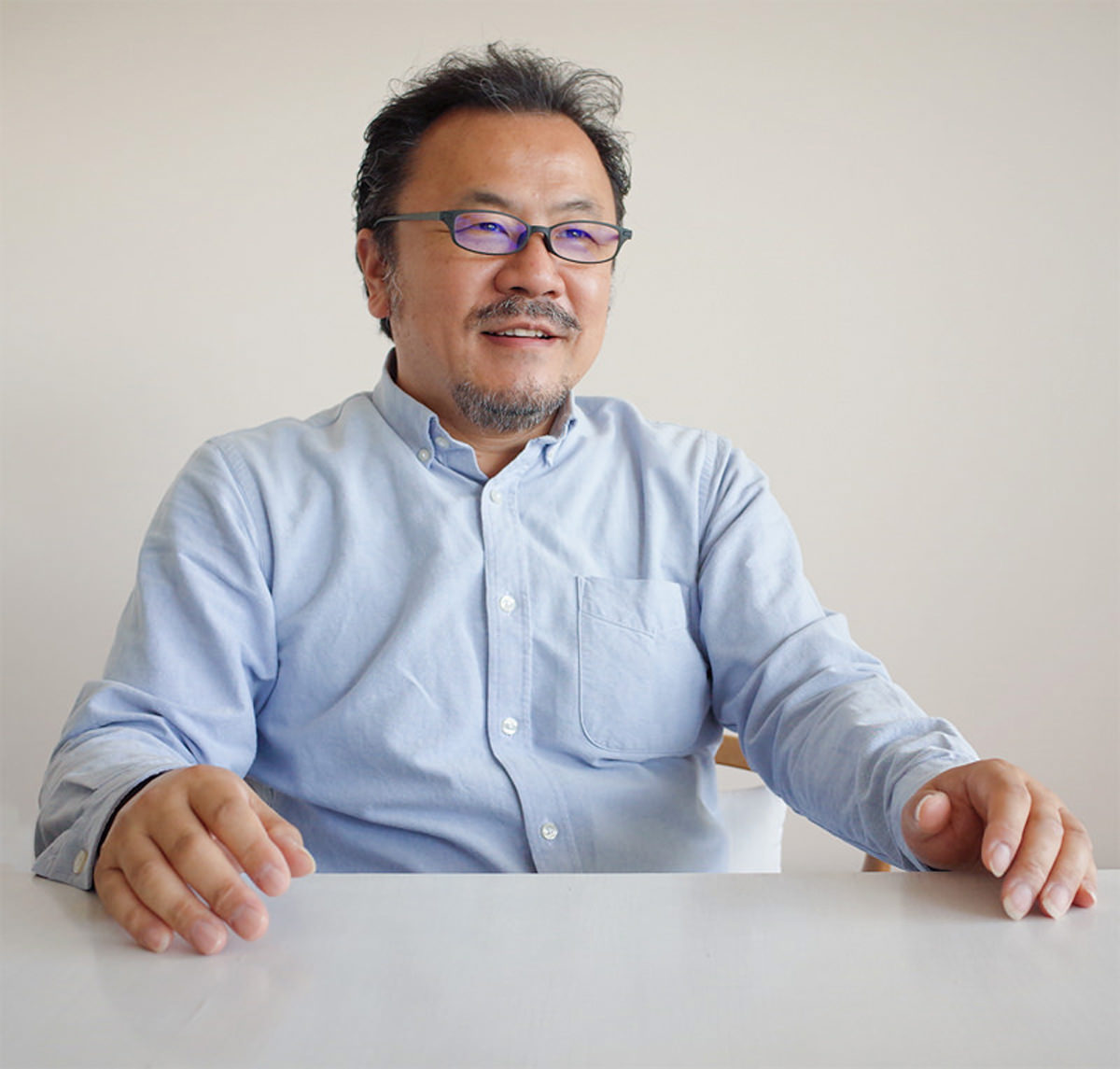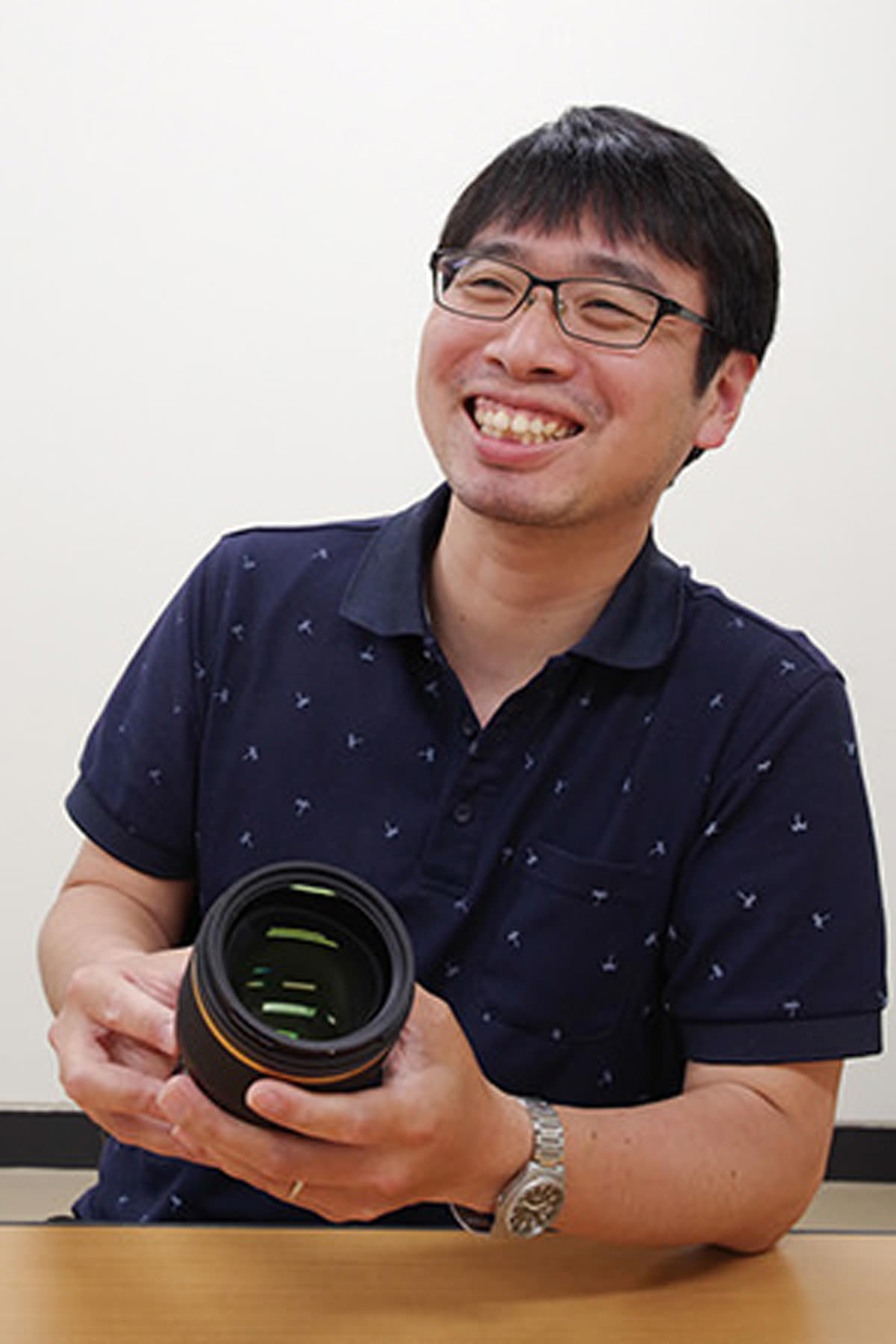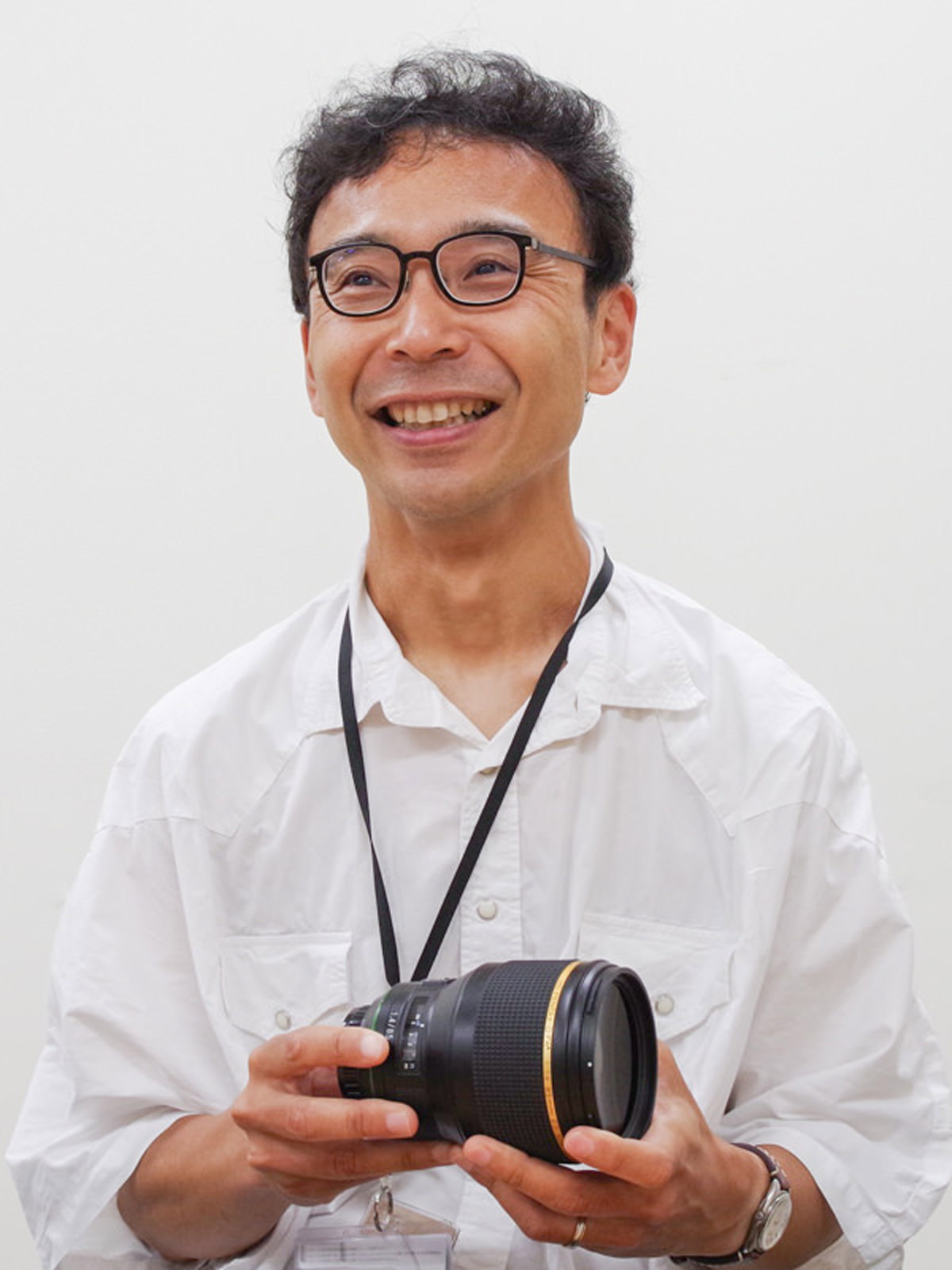Ricoh Announces HD PENTAX-D FA Star-Series 85mm f/1.4ED SDM AW for K-Mount Digital SLR Cameras
Ricoh Imaging Americas Corporation today announced the HD PENTAX-D FA★85mm F1.4ED SDM AW lens, the second fixed-focal-length lens in the new-generation PENTAX Star (★) lens series. Designed for use with PENTAX K-mount digital SLR cameras, Star-series lenses boast the highest imaging performance of all PENTAX lens lineups.
PENTAX developed a new, ring-type SDM (Supersonic Direct-drive Motor) exclusively for this new lens to enable flawless, high-speed autofocus operation, with an exterior design that assures a firm grip for manual-focus operation. The HD PENTAX-D FA★85mm F1.4ED SDM AW lens is designed not only to assure the highest imaging power currently possible but also to optimize the joy of picture-taking.
The new lens incorporates three Super ED (Extra-low Dispersion) glass optical elements to effectively minimize chromatic aberration, and a glass-molded aspherical optical element to effectively compensate for spherical and chromatic aberrations and field curvature to deliver extra-clear, high-contrast images with edge-to-edge sharpness, even at open aperture. This design also reduces distortion to nearly zero at a focusing distance of four meters to deliver well-defined, distortion-free images over the entire focusing range, from the minimum focusing distance to infinity.
The HD PENTAX-D FA★85mm F1.4ED SDM AW lens boasts an F1.4 maximum aperture, useful with many different subjects in a range of applications, including portraiture with an effectively defocused background, the handheld shooting of indoor scenes and scenic photography. The extra-large aperture produces a bright, clear viewfinder image that will surely inspire photographic creativity and imagination.
Developed as an AW (All Weather) model, the new lens features dustproof, weather-resistant construction with eight special seals to prevent the intrusion of water into the lens barrel. When paired with a dustproof, weather-resistant PENTAX digital SLR camera body, it assures a durable, reliable digital imaging system that performs superbly in demanding shooting settings — even in rain or mist, or at locations prone to water splashes or sprays.
Anticipating the further advancement of SLR camera bodies in the future, PENTAX has designed this lens to deliver extra-clear, high-contrast images with edge-to-edge sharpness by compensating various aberrations to a minimum, while greatly enhancing resolving power — two factors absolutely essential in the next-generation Star series. It provides exceptionally high imaging performance even at open aperture, a beautiful bokeh (defocus) effect, and outstanding image rendition at close ranges — all reasons why it produces high-quality well-defined images. It also boasts an extra-large F1.4 maximum aperture, useful with many different subjects in a range of applications, including portraiture with an effectively defocused background, the handheld shooting of indoor scenes, and scenic photography. It helps the camera to produce a bright, clear viewfinder image that will inspire the photographer’s creativity and imagination.
This lens incorporates three Super ED (Extra-low Dispersion) glass optical elements to effectively minimize chromatic aberration, and a glass-molded aspherical optical element to effectively compensate for spherical and chromatic aberrations and field curvature to deliver extra-clear, high-contrast images with edge-to-edge sharpness, even at open aperture. It also reduces distortion to nearly zero at a focusing distance of four meters to deliver well-defined, distortion-free images over the entire focusing range, from the minimum focusing distance to infinity. This lens is also treated with high-grade, multi-layer High-Definition (HD) Coating, which reduces average reflectance in the visible ray spectrum to less than 50% of conventional multi-layer coatings, effectively reducing flare and ghost images to a minimum even in demanding lighting conditions such as backlighting.
To deliver the highest image quality possible over the entire focusing range — from the minimum focusing distance to infinity — this lens features a newly designed, large ring-type SDM to efficiently drive the focusing mechanism, which consists of a larger number of optical elements than ordinary lenses, and is required to shift heavy rear-optical-element groups in unison. Generating a torque approximately 1.3 times that of the unit installed in the HD PENTAX-D FA★50mm f1.4 SDM AW, this new SDM assures flawless, high-speed autofocus operation.
Other features
- Nine-blade, round-shaped diaphragm to produce a natural, beautiful bokeh (defocus) effect up to the F2.8 aperture setting, while minimizing the streaking effect of point light sources
- Exterior design that facilitates focus-ring operation in manual-focus shooting and provides a firm hold
- Electromagnetic diaphragm-control mechanism** for flawless, high-precision exposure control during video recording
- SP (Super Protect) coating to keep the front surface free of dust and spots
PENTAX’s section leaders talk about their enthusiasm for development and the appeal of this lens.
The reason why we chose “85mmF1.4”
Iwasaki: At fan events, I have met many of our users who cherished their “smc PENTAX-FA★85mmF1.4ED[IF]”. I was told by many of them that it is simply a great lens. We wanted to offer an 85mmF1.4 specification lens, which doesn’t exist in our current lineup, as a new-generation Star-series lens with an amazing performance and a different type of imaging vector from the “smc PENTAX-FA★85mmF1.4ED[IF]”.
The road to the new PENTAX “85mmF1.4”
Iwasaki: The purpose in developing this lens was clear, beginning with the desire to create a simply high-performance lens. We took comparison shots with our lenses and competitor lenses, carefully examining the direction of the new lens including image resolving performance and bokeh effects. Out of the many examining areas we pursued, we couldn’t decide until the very end how to reduce purple fringing. We went over this issue many times with the optical design team, but the results did not reach what we have expected. Optical design team commented that there were limits in the lens construction when using the convex optical element in the front most position. So we thought and thought, and finally came up to the conclusion that adding a compensating lens group with a concave lens element to the front most position and incorporating many Super ED glass elements could suppress aberrations. Because the optical design was almost completed, we were faced to decide whether or not to completely change the lens construction and start over from scratch. The new optical design was a ray of light to realize the highly idealistic lens we had had in mind from the very beginning. Both the development and product planning teams agreed that we should start over from scratch.
Our vision on the use of “HD PENTAX-D FA★85mmF1.4ED SDM AW”
Iwasaki: In the end, I want people to use this as a portrait lens. For those who don’t usually take portraits, this lens will be a good opportunity to take on the challenge. I hope that users will appreciate the quality of viewfinder images while enjoying not only the brightness but also the sense of depth when looking at the subject through the viewfinder.
I believe the resulting image will be more beautiful than the users imagine. I recommend “Natural” or “Flat (contrast adjusted from default)” for the Custom Image setting. In addition to portraits, I hope that the users will try shooting in natural lightings, such as sunlight filtering through leaves. I believe they will enjoy the reproduction of soft lighting contrasts and beautiful bokeh effects without fringing. But the users should never look directly at the sun (also avoid such framing) as this large-aperture medium telephoto lens is extremely dangerous. If sunlight enters the frame, it can let in enough light to burn the shutter curtain.
How the new-generation Star-series lens should be
Watanabe: Although the basic design of this lens is a continuation of the first new-generation Star-series lens “HD PENTAX-D FA★50mmF1.4 SDM AW” and the second “HD PENTAX-DA★11-18mmF2.8ED DC AW”, we paid particular attention to how we should incorporate the exterior design of the past Star-series lenses on this new lens. Drastically changing the impression of the lens makes it impossible to identify it as part of the same series, but too little change fails to give the impression of a new generation. First, we aimed to carry on the simple, strong design of the Star-series lens while minimizing any decorative embellishments for a simple form. We consider that the lens hood is a part of the lens, so we tried to create a more refined style with the dedicated lens hood integrated into the overall lens. We also instituted a design policy to harmonize the coloring and placement of the iconic Star-series lens gold ring and the familiar green ring of PENTAX lenses in order to give a sense of solidarity and unwavering reliability as we expand the new-generation Star-series lens lineup.
In other words, we dismantled the design elements that create past lens products, reviewed them, and carefully selected which best fits the Star-series lens, then rebuilt them to arrive at a new generation styling.
Exterior design of HD PENTAX-D FA★85mmF1.4ED SDM AW
Watanabe: The product design is unique in the way that it neatly houses the large front lens elements inside the barrel. The voluminous internal structure which extends from the mount to the middle features design elements similar to the “50mmF1.4” in the same series. A knurled finish not available on the “HD PENTAX-D FA★50mmF1.4 SDM AW” mount end was added as a finger grip for turning the lens when attaching or removing it, and in order to reduce the loss of control due to the weight of the lens itself. After achieving satisfying controls, we made repeated adjustments not only to various elements but to the overall balance in order to achieve a unified look for the series.
In terms of functional aspects, we also paid particular attention to the lens hood, applying rubber to protect the edge of the hood from scratches when changing lenses or when setting the camera down during the shooting. Although this was seen on previous FA ★ lenses, we believe it is a significant function considering the shooting range of this lens.
A major design policy change
Nomura: In the initial stages of development, we proceeded with design while maintaining lens size restrictions. For example, lens elements were added based on the past product “smc PENTAX-FA★85mmF1.4ED[IF]” with the goal of delivering imaging for the digital age. However, even with some improvements to MTF, it was not possible to correct for axial chromatic aberration at an acceptable level. During the design process, we were also faced with the limitations in focusing lens element weight and lens diameter size due to the previously-mentioned restrictions.
Because the reduction of axial chromatic aberration was one of the themes which need to be achieved in “D FA★85mmF1.4”, the later design policy was drastically changed. We made it our top priority to achieve optical performance appropriate to a D FA★ lens without being too caught up in keeping the lens size small. We interacted with the mechanical design team repeatedly, and as Iwasaki from the product planning team mentioned, we expanded our range of options to the lens construction type selection.
Problem-solving lens construction and technologies
Nomura: As a result, we opted for a lens construction with the rear Gauss-type lens group (focus lens group) and the front compensating lens group as the base construction that is used in “HD PENTAX-D FA★50mmF1.4 SDM AW”. Utilizing two Super ED glass elements in the front group and one in the rear group effectively compensates for chromatic aberration, and a single aspherical lens reduces spherical aberrations and curvature of field aberrations, ensuring uniform resolving performance and contrast from the center to the edges of the frame. Of course, as Super ED glass is an expensive material, this is our first lens to use three Super ED glass elements.
When holding the lens, you’ll notice the concave lens which is closest to the subject. The three Super ED glass elements are highly effective in correcting for chromatic aberration, and the divergence effects of the concave lens also contribute significantly to compensating for various aberrations such as chromatic aberration. We set the competitor products in the same class in recent years with amazing performance as the benchmark for this lens, but there are some lenses in the 86mm filter diameter. Although the filter diameter of this lens is also large due to a change in design policy, we were somehow able to keep it in 82mm similar to the lenses such as “HD PENTAX-D FA 24-70mmF2.8ED SDM WR” thanks to the concave lens in the front. However, the characteristics of this placement result in a larger light flux diameter behind the concave lens due to divergence effects. The focus lens group weight constraints and the task of placing the SDM to ensuring that the product itself was not too large caused the mechanical design team quite a bit of trouble.
As for coating, Aero Bright Coating II used in “HD PENTAX-D FA★50mmF1.4 SDM AW” is not used on this lens. As for “HD PENTAX-D FA★85mmF1.4ED SDM AW”, we put effort into reducing ghost images via the lens construction design and reduced lens internal reflection by maximizing the effect of HD Coating to achieve a high level of image creation that PENTAX pursues and a superb color balance.
Lastly, during the manufacturing process, the part of the optical system will be moved, and to adjust spherical aberration for each lens. Depending on the amount of residual spherical aberration, maximum aperture imaging can become too soft due to flares, so we pursued a very strict level of adjustment precision in mechanical construction and adjustment methods in order to achieve a favorable sense of flaring and resolution.
Each person in charge of mechanical construction and adjustment methods worked to achieve such a strict level of precision, resulting in the imaging characteristics and performance innate to the lens.
A major design policy change even in mechanical design
Oara: The mechanical design of the lens barrel and internal mechanisms required for obtaining superb optical performance, the drive system for enhancing responsiveness during shooting, and the control of these were quite a bit challenging.
Achieving superb performance in the optical design
Oara: Because this is a large-aperture medium telephoto lens, if sunlight enters the frame, it can let in enough light to burn the shutter curtain. Beams of light are wide, so even if the light source is completely outside of the angle of view in a simulation, it reflects off various surfaces such as the lens barrel and edge of the lens, and in many cases, it heads straight for the image plane. This was basically solved with the shape and anti-reflective coating. However, we had to compete for the space required in the optical design to achieve a shape as a countermeasure. Flares occurred even when the anti-reflective coating was applied to space, and adding more anti-reflective coating resulted in production problems at the factory. We took on step by step tasks such as reworking the shape and the area of coating a number of times before finally solving the problem.
The 85mmF1.4 is a lens with a very shallow depth of field. It is heavy and its own weight can cause misalignment of the optical axis, leading to changes in the resolution, so it was quite tough to achieve the high level of precision required and ensure that the resolution didn’t change before and after adding components in the manufacturing process.
We looked at every possible method such as redesigning frame components, switching to high-strength materials, adjusting optical aberrations, and optimizing the manufacturing process, finally arriving at a level of precision that allowed for commercialization.
New high-torque SDM
Ito: In order to shift the heavy rear focus lens group, which consists of a large number of lens elements, this lens features a new SDM with the dedicated ring-type ultrasonic wave motor. It has approximately 1.3x the torque of “HD PENTAX-D FA★50mmF1.4 SDM” AW, delivering high-speed, smooth autofocusing. We also developed an optimized driver simultaneously with the motor. It is so efficient that we were able to reduce power consumption drastically compared to other 50mmF1.4 lenses. Torque and drive speed tend to be focused on when talking about the drive system, but optimizing added lubricant, and establishing material and coating conditions contributes to durability and stable performance.
Delivering stress-free shooting
Oara: Because the drive mechanism of the rear group (focus lens group) consisting of eight lens elements makes the group 1.4 to 1.5 times heavier than “HD PENTAX-D FA★50mmF1.4 SDM AW”, we had no choice but to add a tension mechanism to prevent peripheral image changes due to rattling and tilting of the lens group when the drive system stops.
However, applying tension to parts of the drive system affects drive speed. Therefore, thorough streamlining of the drive mechanism was necessary to prevent a drop in drive speed, resulting in measures against deformation of the SDM transfer mechanism, placement of multiple linking levers, adoption of a bearing mechanism for the drive cam, and lightening of moving lens group. Also, the amount of movement and lens weight in the optical system called for the optimal solution, resulting in bouncing ideas back and forth many times with the optical design team.
These step by step solutions and coordination with the optical design team resulted in a stable focus drive mechanism.
In the end, numerous improvements to the mechanism resulted in drive system control that delivers approximately the same acceleration and deceleration time as “HD PENTAX-D FA★50mmF1.4 SDM AW”. I believe these efforts resulted in nearly the same autofocus drive responsiveness for both products.
Furthermore, because the construction utilizes a powerful motor to move the large focus lens group, motor control via conventional power startup and stopping results in noticeable drive starting and stopping noise, but we succeeded in silent operation by making some control adjustments. As you can see, by solving a variety of challenging issues in the PENTAX lens development history, we were able to successfully create “HD PENTAX-D FA★85mmF1.4ED SDM AW”.
Comfortable controls even for manual focusing
Oara and Ito: We paid attention not only to autofocus drive, but also to the controls when turning the focus ring for manual focusing. The spring that holds down the high-torque SDM builds up force, and can feel a bit weak when performing manual focus operations. The desired control sensation was achieved by adding a slip mechanism for enhancing sensation as well as conducting repeated tests of the SDM component materials and the lubrication in the drive mechanism with the persons in charge of the SDM. Instead of using the autofocus only, we hope that people try shooting with manual focus and enjoy the Quick-shift Focus System (QFS).
The HD PENTAX-D FA★85mm F1.4ED SDM AW lens will be available in mid-June at www.us.ricoh-imaging.com as well as at Ricoh Imaging-authorized retail outlets for a manufacturer’s suggested retail price of $1899.95.

